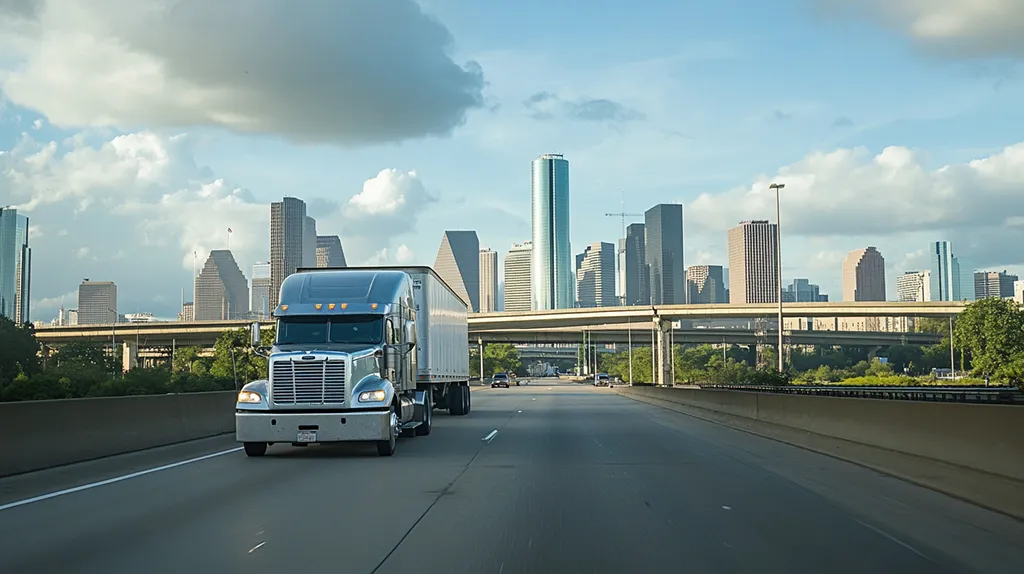The Best Routes for a Smooth Move from San Antonio to Houston
As someone who has navigated countless moves between San Antonio and Houston, I can tell you that the route you choose can make all the difference in ensuring a smooth and stress-free relocation. The drive from San Antonio to Houston is a well-traveled path for many Texans, whether they’re moving for a new job, a fresh start, or simply seeking the vibrant life Houston has to offer. Here’s a guide to the best routes to take, what to expect along the way, and a few tips from my experience as a professional mover.
Primary Routes: I-10 East and TX-130 Toll Road
1. Interstate 10 (I-10) East
The most direct and popular route from San Antonio to Houston is via I-10 East. This route spans approximately 197 miles and typically takes around 3 to 3.5 hours, depending on traffic conditions. I-10 is a straight shot, making it easy to navigate, but it’s crucial to consider peak traffic hours. Leaving San Antonio early in the morning or later in the evening can help you avoid congestion around major exits, especially near Seguin and Katy, Texas.
Key Landmarks:
- San Antonio: As you depart from San Antonio, consider taking a quick drive through the historic Alamo or San Fernando Cathedral. Even if you’ve seen them before, they’re a great reminder of the rich history of our city.
- Katy Mills Mall: As you approach Houston, you’ll pass through Katy, home to the popular Katy Mills Mall, a great stop if you need a break or want to stretch your legs.
2. TX-130 Toll Road
If you’re looking to bypass potential traffic and don’t mind paying a toll, the TX-130 Toll Road is an excellent alternative. Starting from San Antonio, take I-10 East and then transition onto TX-130 North near Seguin. This route allows you to avoid some of the busier sections of I-10 and enjoy a more open road. The toll road is known for its lighter traffic and higher speed limits (up to 85 mph in some areas), which can shave some time off your journey.
Key Landmarks:
- Cibolo Nature Center: Near the start of your journey on TX-130, you can visit the Cibolo Nature Center in Boerne. It’s a beautiful spot to relax before hitting the road.
Understanding Traffic Patterns and Timing
Houston and San Antonio are both bustling cities with unique traffic patterns. Houston, in particular, is known for its traffic, so timing your move is essential.
Best Times to Travel:
- Weekdays: If possible, plan your move during weekdays and aim to hit the road after the morning rush (around 9:30 AM) and before the afternoon rush (before 3:00 PM).
- Weekends: Saturdays are generally less congested than Sundays, especially on I-10 as you approach Houston.
Pro Tip: Avoid traveling during major events in either city, such as Spurs games in San Antonio or major concerts and sports events in Houston. These can significantly impact traffic.
Pit Stops and Amenities Along the Way
Moving can be exhausting, and taking a few breaks is key to maintaining your energy and focus. Thankfully, the route from San Antonio to Houston is dotted with convenient stops:
1. Buc-ee’s in Luling:
This popular Texas pit stop is almost a tradition. Located about an hour outside San Antonio, Buc-ee’s offers clean restrooms, a vast array of snacks, and fuel. It’s a perfect place to take a breather.
2. Columbus, Texas:
Roughly halfway between San Antonio and Houston, Columbus is an ideal place to stop for a meal. The town has several local diners and fast-food options that are easy to access from I-10.
Final Thoughts
Choosing the right route and timing for your move from San Antonio to Houston can help you avoid unnecessary stress and ensure that your belongings arrive safely and on time. Whether you stick to I-10 East for the direct route or opt for the TX-130 Toll Road to avoid traffic, planning ahead is key. And remember, if you ever need assistance with your move, our team at Move Logistics is here to help.
Safe travels!
Sources:
- Texas Department of Transportation (TxDOT): Provides traffic updates and information on toll roads.
- Google Maps: For up-to-date traffic patterns and estimated travel times.
Read Also:






